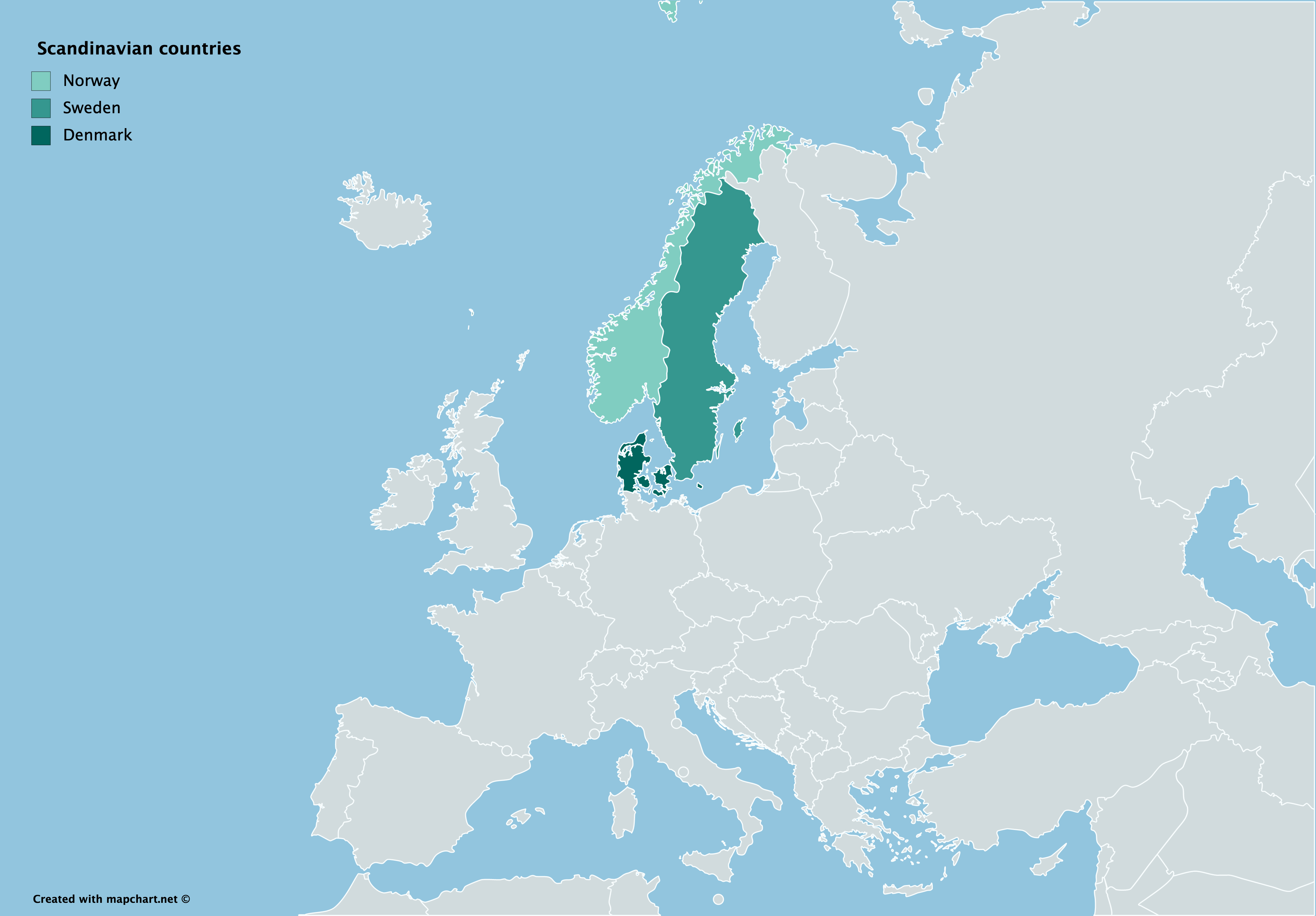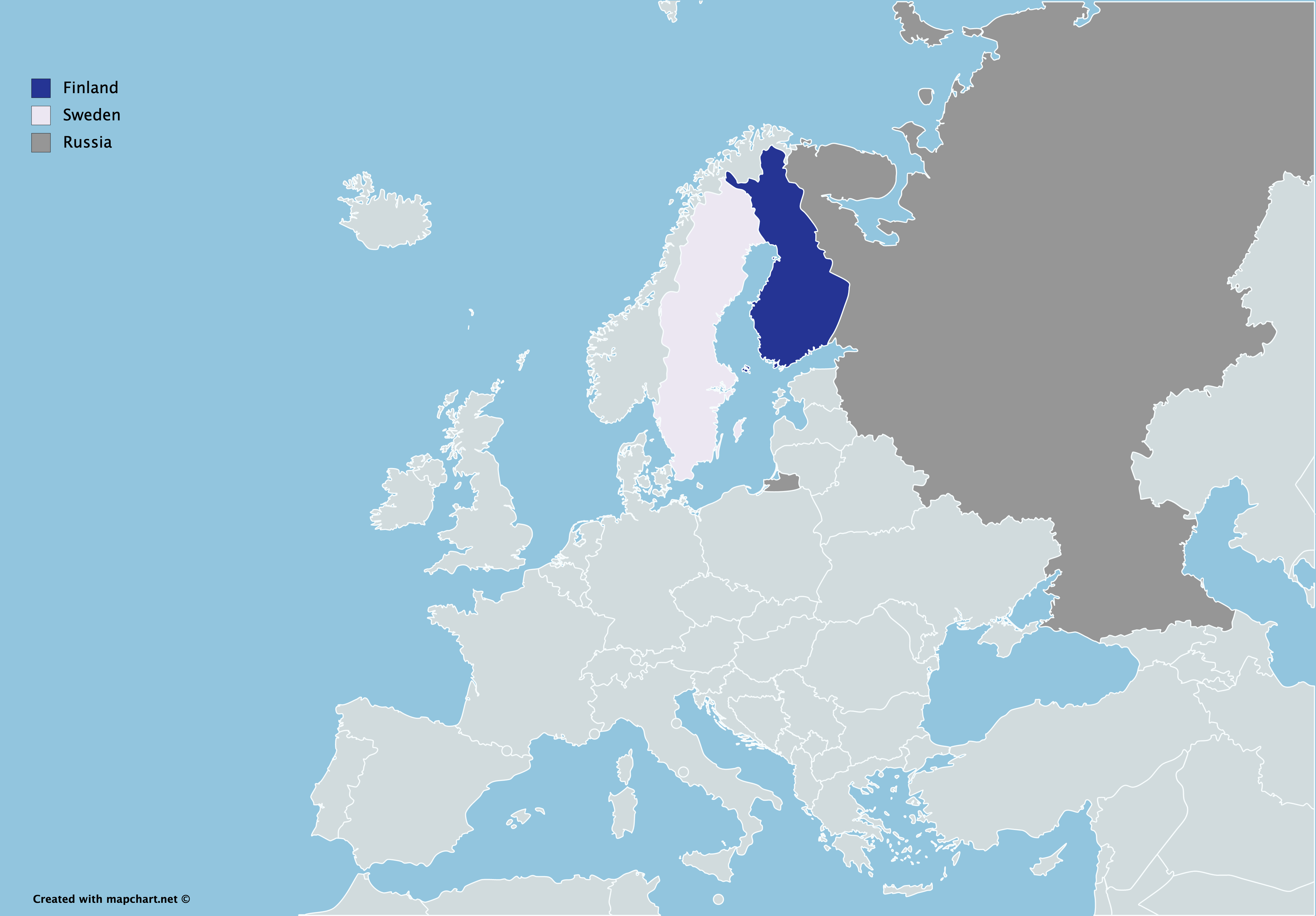Finland - and the last 500 years
Welcome to my first foray into geopolitics where I present to you in technicolor a very compelling timeline of events that have sculpted Finland’s political and cultural landscape.

A few months ago I made my first Finnish acquaintance- Ari. He is an exceptional Karateka and also my Sensei or Teacher. Between trainings, Ari and I would chat over a hearty bowl of Ramen about Finland and Martial Arts. When I heard about their 34 year old female Prime Minister- Sanna Marin and how saunas held the same significance in Finnish culture as Onsens in Japanese, I was amazed! You could say, what was once curiosity, turned into fascination after I read about Finland in Jared Diamond’s Upheaval. Which is a riveting read about Why and How certain nations recover from crisis and others don’t. I found the chapters on Finland were an excellent window to learn more about the nation’s history. So evidently inspired by the book and conversations with Ari, I decided to pen down what I have assimilated.
This article is divided into two sections- the first, will acquaint you with basics or conversation starters- like geography, language and facts that distinguish Finland from its European counterparts. And if that continues to pique your interest you can read part two, to learn about their absolutely fascinating and dramatic course history from 1500s through 2000s. If you have already read Upheaval, I still urge you to check out the timeline of events. I’ve made it crisp and clean to help us recollect the information better.
Before you begin, I urge you to write down the first three things that come to your mind about Finland. After you read this post, please reattempt the question. Post your thoughts in the comments section to share and to etch them in your memory. If you come up with five new topics I would consider my job well done.
- “What captivates me most about Finland is its extremes. The country is a study in contrasts, from lush, berry-filled forests to snowy, frozen winterscapes, traditional Sami handicrafts to experimental design, vast wilderness to vibrant cities, time-honored industry to cutting-edge tech, searing summers to vivifying winters, steaming saunas to bracing lakes, midnight sunlight to enveloping darkness, and skies that transform from expansive blackness to light shows of unearthly neon greens, pinks, purples and reds as the aurora borealis dances overhead. Finland is a paradox of perpetual change and abiding timelessness. Its an extraordinary place.” Catherine Le Nevez, Writer
Finland - conversation starters
It is a Nordic (meaning North) country in Northern Europe.
Here is a map of Nordic countries

It is not a scandinavian or baltic country.
Here is a map of Scandinavian countries

Here is a map of Baltic countries

It is bordered by Sweden on the west and Russia on the east

It is surrounded by the Gulf of Finland, Gulf of Bothnia and Baltic sea
“Helsinki” capital and largest city
“Suomen tasavalta” Endonym
“Finnish, Swedish and Sami” are the most widely spoken languages. Unlike most European languages (eg: Swedish and many more) that originate from the Indo-European language family, Finnish does not. Finnish and Saami languages belong to the Finno-Ugric language family. Here’s a brilliant illustration of these Language family trees by Minna Sundberg.

“Kalevala” is to the Finns what Iliad and Odyssey are to the Greeks, a National Epic Holds a higher place in Finland’s literary consciousness than do the works of Shakespeare for english speakers.
“Tulip table” or the Saarinen is eponymous with one of the famous Finnish designers/architects of the 21st century.

“Euro” currency
“Sami” Indigenous people (cover photo of this article)
“K” they love this alphabet and it spans over 200 pages of the dictionary!
Timeline of Historical events
- 1560 - 1658
- Stormaktstiden!
The Swedish empire ruled over Finland and was a Great European Power situated on the Gulf of Finland.
- 1598-1613
- Time of troubles in Russia
To understand finland you have to understand Russia, its great eastern neighbor. Around this time, Russia was unstable after a long period of lawlessness and anarchy that ended with the accession of the Romanovs
- 1617
- Treaty of Stolbovo
Exacerbating the state of Russia, a treaty of Swedish gains, in the time of troubles, deprives Russia of direct access to the Baltic Sea.
- 1682
- Peter the Great
Russia makes a startling comeback with Pyotr(Russian for Peter), who addresses the earlier losses and re-establishes a Baltic presence!
- 1690s 1700s
- Treaty of Preobrazhenskoye
Tensions continue to build between Russia and the Swedish empire. Russia's hopes come to a fruition when an adventurer allies Russia with Denmark and German kingdom- Saxony, to bring down the Swedish Empire.
- 1700-1720
- Great Northern War (Isoviha, the great hatred in Finnish)
Tsardom of Russia successfully contests the Swedish empire. This period marks the beginning of the end of the Swedish empire and rise of Russian power as a major force in European politics. It is during this war, that Finland, geographically located in the middle of the two aggressors, is occupied by the Russian invasion and several thousand finns are killed and many more taken into slavery.
- 1721
- Rise of Russia and the end of the Great northern war
In the Treaty of Nystad, Finland was returned to Sweden, while Swedish Estonia and the bulk of Karelia were ceded to Russia. Sweden loses almost all of its overseas holdings gained in the 17th century and ceases to be a major power. Russia gains its Baltic territories and becomes one of the greatest powers in Europe
- 1741-1743 and 1788-1790
- Russo Swedish war
Sweden's attempts to recover its lost territories, but in vain
- 1808
- Russia wants Finland
In the Congress of Erfurt, The Tsar Alexander I from Russia signs a treaty with Napolean to obtain Finland from Sweden. This congress is referred to in War and Peace by Tolstoy
- 1809
- Russia has Finland
Another war leaves Sweden dejected and it finally cedes its priced possession - Finland, to Russia. Finland keeps its legal system, faith and becomes a semi-autonomous grand duchy
- 1812
- Finland gets a new capital
The capital is transferred from Turku to Helsinki
- 1856-1860
- Finland under Russia
Begins to issue it own postage stamps and introduces “Markka” to the world, its currency. People who made money from the tar and paper produced in the vast forests were the people who manage the ports in Oulu. Most of the population that lived in the hinterlands remained poor.
- 1906
- Eduskunta parliament
Parliament is formed and equal suffrage is declared making it the first country in Europe to grant full political rights to women!
- 1917
- Russian Revolution
Russian Revolution begins and Finland gets its independence on Dec 6th of the same year
- 1918
- Finnish Civil war
Russia foments disagreement in Finland and following an attack on Vyborg by Russian Finnish reds in January, the war begins. 30,000 fins are killed by the end of the war in May. The Finnish white win with substantial help from Germany. It is important to note that the white sought to emulate Germany, however after the Germans lost the war in 1918 the Finns chose a republican state model
- 1919
- First President
Finland gets its first President - KJ Ståhlberg, with the support of the newly formed National Progressive Party
- 1939
- WW2 begins
In August the Soviet and German ministers confounded the rest of the world by calling off the propaganda war and signing a non-aggression pact called the Molotov-Ribbentrop Pact thereby acknowledging that Finland belongs to the Soviet sphere. Two things followed this pact: the German Blitzkreig invasion of Poland, and USSR demands for a slice of South-eastern Karelia - Finland denies, and on Nov 30 Soviet Union attacks Finland and thus begins the Winter war
- 1940
- Finland fights with all its glory
Armies fight on the Finnish/Soviet border. Soviet bombs are dropped on Helsinki and other finnish cities killing ten percent of Finland's total civilian war casualties in the five years of war. The Finns knowing this was an unwinnable war, fight with the aim to make the Russia's victory slow, painful, and costly. Despite good ammunition, Finland resisted the red army with Molotov cocktails, mobile skiing troops, guerilla style assaults leaving Russian armies dejected and leaderless. After 105 days of fighting and 130K dead Soviet soldier finland - about 8 SU soldiers for every finn killed. The Finns cutthroat resistance, unwillingness to fail, and the cost of the war, convinced the Soviet to not try to conquer all of Finland.
- 1940 and 1944
- Finland tried and lost
Finland is forced to cede one tenth of its territory including the Karelian to the Soviets
- 1941
- The War isn't over
Russia wants more land from Finland. Finland fights back with Germany as an ally. The war lasts for three years and the Finns finally reach their old border in Karelia and try to resettle it
- 1944
- End of WW2 and time of Mannerheim
Finland was twice at war with the Soviet Union from November 1939 until September 1944, Mannerheim successfully led the defense of Finland as commander-in-chief of the country's armed forces. In 1944, when the prospect of Germany's defeat in World War II became clear, Mannerheim was elected President of Finland and oversaw peace negotiations with the Soviet Union and the UK
- 1947
- War reparations and change in economy
This is an important period in the history of the Finns. To learn more about how the Finnish economy changed from a predominantly agricultural one to an eventually stabilized postwar economy - read my article which talks about its relationship with Russia and how Finland managed its crisis with Russia by doing things unthinkable of any other democracy and excelled at negotiating with its peers in the east and west
- 1961- early 2000s
- Economy
Free trade with EFTA in 1961 Also signed preferential trade with soviets Soviets disappeared Markka devalued Unemployment jumped 3 to 20% Joined EU new constitution approved Founding member of euro First female president Paavo Nurmi’s career as a long distance runner Finland wins Miss Europe Nobel Prize in Chemistry Helsinki Olympics is held Finnish design and architecture reaches new heights
I hope you found this journey through Finland’s complicated past as fascinating and dramatic as I intended it to be!
Their unique language and complicated past- filled with century-long tsar-ist rule, migrating refugee crisis from Karelia and their outstanding military achievements during the Winter war- has helped them establish a powerful national identity like no other.
Here’s a crucial slogan from the difficult times in its history: “Swedes are not us, Russians we will not become, so let us be Finns”
Read my next post on Finland. [Coming soon]